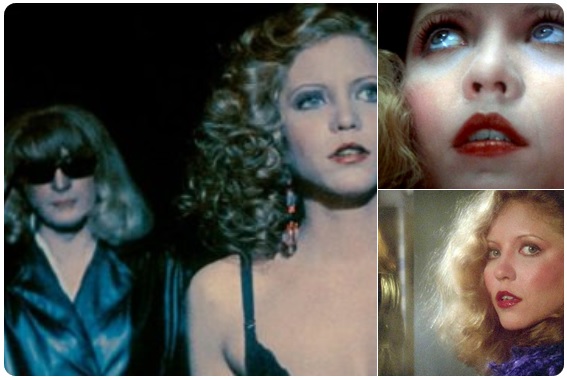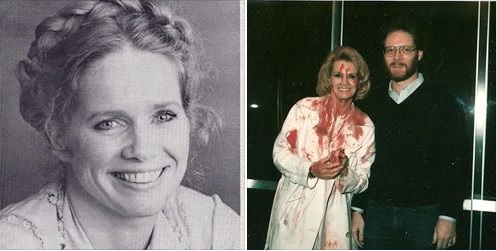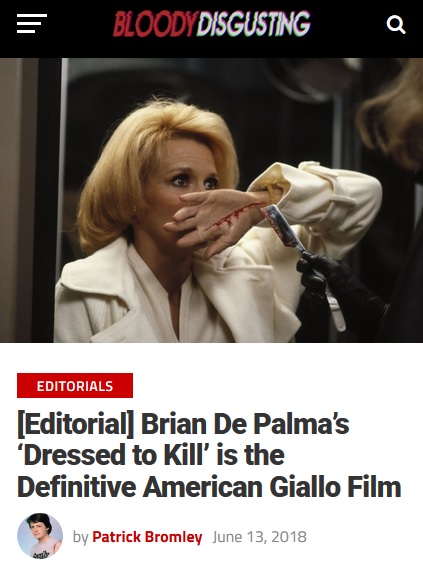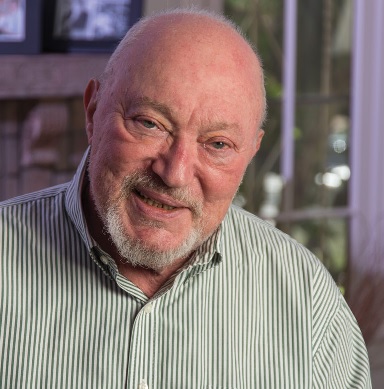Imagine this: Liv Ullmann getting stabbed to death in the elevator in Brian De Palma’s DRESSED TO KILL. Huh?! Little known factoid: Liv Ullmann, the brilliant muse of Ingmar Bergman in CRIES AND WHISPERS, PERSONA and FACE TO FACE, was Brian De Palma’s first choice to play the role of “Kate Miller” in DRESSED TO KILL — the role that ended up being played so iconically by Angie Dickinson.
The character gets shockingly stabbed to death in an elevator — an homage to Janet Leigh’s character “Marion Crane” getting stabbed to death in the shower in Hitchcock’s PSYCHO.
In both movies, it was essential to cast big-name stars in these parts to make it all the more shocking when they are unexpectedly bumped off early in their respective scenarios.
In the summer of 1979, when DRESSED TO KILL was in preproduction, I was working as Brian De Palma’s assistant. I was 23 — and a very big fan of Liv Ullmann — who had won a Golden Globe Award for Best Actress in THE EMIGRANTS (1971) and nominated for two Academy Awards for Best Actress in THE EMIGRANTS and FACE TO FACE (1976). So, you can imagine my excitement when Brian handed me a copy of the DRESSED TO KILL script and said, “I want you to hand-deliver this to Liv Ullmann at the Majestic Theater. She is expecting you in her dressing room.”
Liv was currently starring on Broadway in Richard Rodgers newly-musicalized version of I REMEMBER MAMA. I would be going to drop off the script between a matinee and evening performance.
I arrived at the stage door with a large envelope in my hand. I knocked and after a few seconds, the door cautiously cracked open as though it were a speakeasy. A crusty old doorman peered out from the shadows and said, “Yeah?”
“I’m here to see Ms. Ullmann,” I explained in my best business-like voice.
The doorman gave me the once-over, spotted Ullmann’s name written on the envelope, concluded I was just a messenger boy, and sneered, “A delivery? I can take it to her.”
He creaked the door open a little further and held out his gnarly hand, expecting me to give him the package.
As if. I wasn’t going to give up the chance of meeting Liv Ullmann when I’d already come within breathing distance. I gulped and stood my ground. “I have been instructed to deliver this to Ms. Ullmann personally. She is expecting me. My name is Sam Irvin. From Brian De Palma’s office.”
Poker-faced, the doorman said nothing for what seemed like an eternity.
Finally, he withdrew his empty claw and shut the door in my face.
Had I been summarily rejected? Should I knock again and demand to speak to someone higher up the food chain? My job was on the line! With all sorts of desperate thoughts running around in my brain, the door suddenly popped back open.
“Ms. Ullmann will see you now,” the doorman grunted, annoyed that he’d been out-maneuvered.
I stepped inside and followed him to her dressing room. He knocked and walked away. The door swung open with a breeze of perfume to reveal the resplendent, welcoming smile of Liv Ullmann attached to her entire being. In person. Yep. I was starstruck.
She graciously greeted me. We exchanged small talk. I gave her the script and she said, “Tell Brian I am looking forward to reading it. Thank you for bringing it to me.”
I departed on Cloud 9 and floated back to Brian’s office. Mission: accomplished.
Sadly, for reasons I don’t recall, Liv eventually passed on the project.
Then Brian had me deliver a script to the wonderful Jill Clayburgh, hot off her Oscar nomination for AN UNMARRIED WOMAN (1978). A long-time friend of De Palma’s, Jill had made her movie debut in his early feature film THE WEDDING PARTY (1969) opposite the young Robert De Niro. My encounter was brief and similar — but equally cherished and memorable. Unfortunately, she also ended up passing due to scheduling conflicts.
Ultimately, Angie Dickinson ended up with the role and knocked it out of the park.
Nevertheless, it is intriguing to imagine what the movie would have been like with Liv Ullmann in the role.
Happy 80th Birthday to Liv Ullmann.
ADDENDUM from DRESSED TO KILL star Nancy Allen: “Liv was Brian’s first choice. He wanted it to be out of character for the actress who played the part to be having the sexual encounter with the stranger in the museum. Someone you might think of as sexually repressed. I suggested he send her flowers and take her to lunch. Ultimately she declined the role because she didn’t want her children to see her in that way.”





 "No. 21 Explores Italian Film Noir," reads the headline of
"No. 21 Explores Italian Film Noir," reads the headline of 





 Jerry Greenberg, the Oscar-winning editor (for The French Connection) who collaborated with Brian De Palma on six projects, passed away yesterday at the age of 81. Greenberg worked on five features with De Palma: Dressed To Kill, Scarface, Body Double, Wise Guys, The Untouchables, and the music video for Bruce Springsteen's Dancing In The Dark. In Susan Dworkin's 1984 book Double De Palma, De Palma said of Greenberg, "I can just talk to him on the phone, and he'll know exactly what I want. And can even do it better."
Jerry Greenberg, the Oscar-winning editor (for The French Connection) who collaborated with Brian De Palma on six projects, passed away yesterday at the age of 81. Greenberg worked on five features with De Palma: Dressed To Kill, Scarface, Body Double, Wise Guys, The Untouchables, and the music video for Bruce Springsteen's Dancing In The Dark. In Susan Dworkin's 1984 book Double De Palma, De Palma said of Greenberg, "I can just talk to him on the phone, and he'll know exactly what I want. And can even do it better."